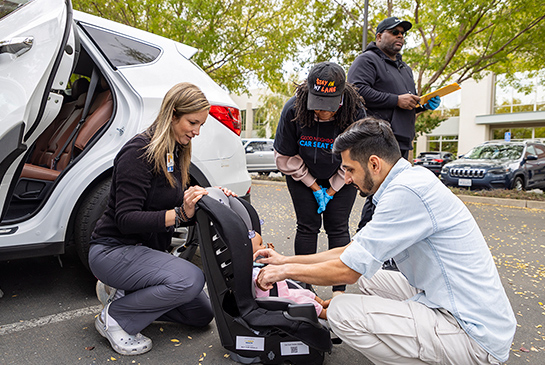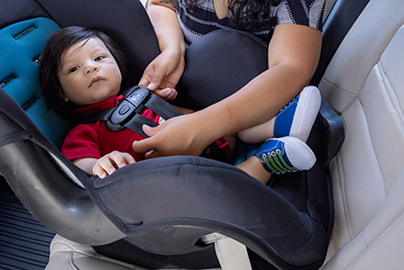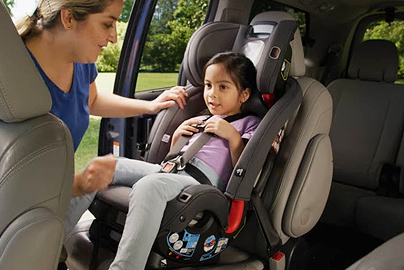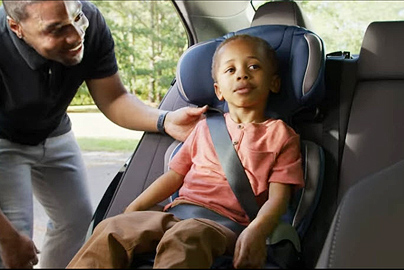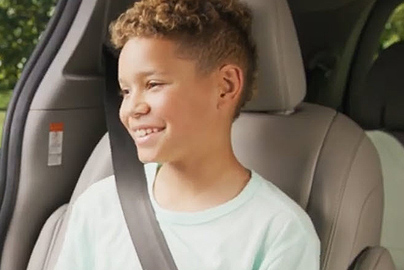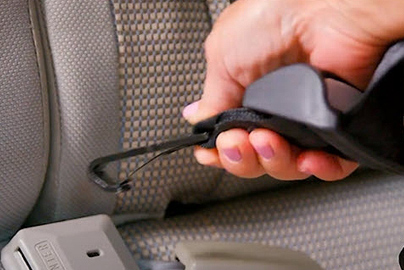Car Seat Safety
Car seat check-ups are available in both English and Spanish for parents and caregivers to ensure their car seat is installed correctly.
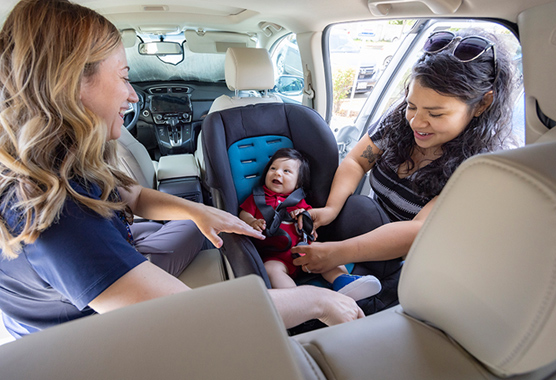
Car Seat Safety
Safety Tips
Make Safe Choices
- Select a car seat based on your child’s age and size. Choose a seat that fits in your vehicle, and use it every time.
- Always refer to your specific car seat manufacturer’s instructions (check height and weight limits) and read the vehicle owner’s manual on how to install the car seat using the seat belt or lower anchors and a tether, if available.
- To maximize safety, keep your child in the car seat for as long as possible, as long as the child fits within the manufacturer’s height and weight requirements.
- Keep your child in the back seat at least through age 12.
Learn how to choose the right car seat for your child
California Car Seat Law
California law requires all children under two years old to ride in a rear-facing car seat, unless the child weighs 40 pounds or more, OR is 40 inches or more tall.
Children under the age of 8 are required to be secured in the back seat in a car seat or booster seat. Children who are 8 years old OR at least 4’9” may be secured by a booster seat, but at a minimum, wear a seat belt.
-
How to Install a Rear-Facing Car Seat
Infants and Toddlers: Rear-Facing
Learn moreFor infants and toddlers, choose a child safety seat from these types:
- Infant car seat carrier with or without base used rear-facing only.
- Convertible car seats can be used in both rear-facing and forward-facing positions.
- All-in-one car seats can be used in three configurations: rear-facing, forward-facing, and as a booster.
-
How to Install a Forward-Facing Car Seat
Toddlers and Preschoolers: Forward-Facing
Learn moreFor toddlers and preschoolers, choose a child safety seat from these types:
- Convertible car seats can be used forward- and rear-facing.
- Combination car seats are equipped with a Five-point harness and can later be used as a booster seat.
- All-in-one car seats can be used rear-facing, forward-facing with the internal harness, or as a booster seat.
-
How to Use a Booster Seat
School-Age Children: Booster Seats and Seat Belts
Learn moreFor school-age children, choose a child safety seat from these types:
- Combination or all-in-one seat using a lap shoulder belt and internal harness removed.
- High-back booster seats must be used when a vehicle does not have a head restraint.
- Backless booster seats can be used when a vehicle has a head restraint in place.
-
When Your Child is Ready for a Seat Belt
Older Children: Seat Belts
Learn moreYour child is ready to move from a booster seat to a seat belt when:
- A child can sit back with their back against the vehicle seat.
- A child’s knees can bend over the edge of the vehicle seat.
- The lap belt lies snugly across the upper thighs and below the hips, and the shoulder belt lies snugly against the chest and rests on the middle of the shoulder.
-
Installation Tips: Seat Belts or LATCH
Learn moreSeat belts or the LATCH system can be used to secure children's car seats. LATCH was developed to make it easier to correctly install child safety seats without using seat belts.

